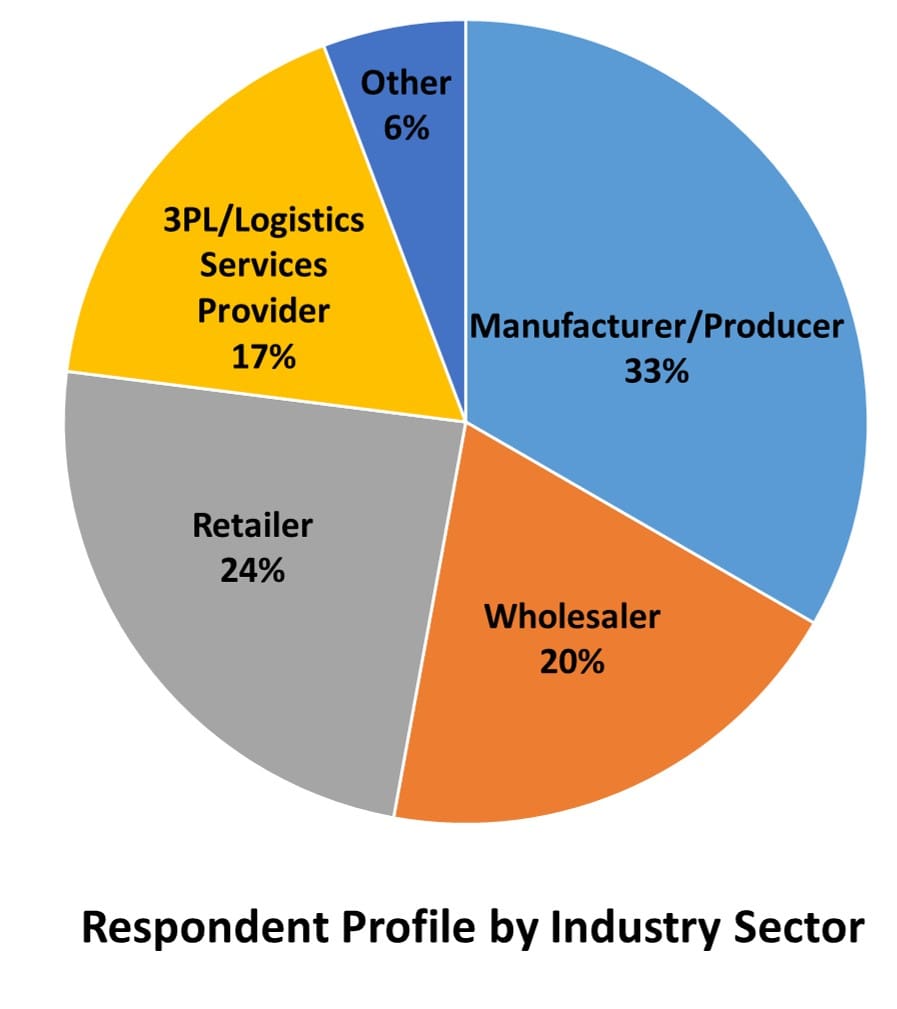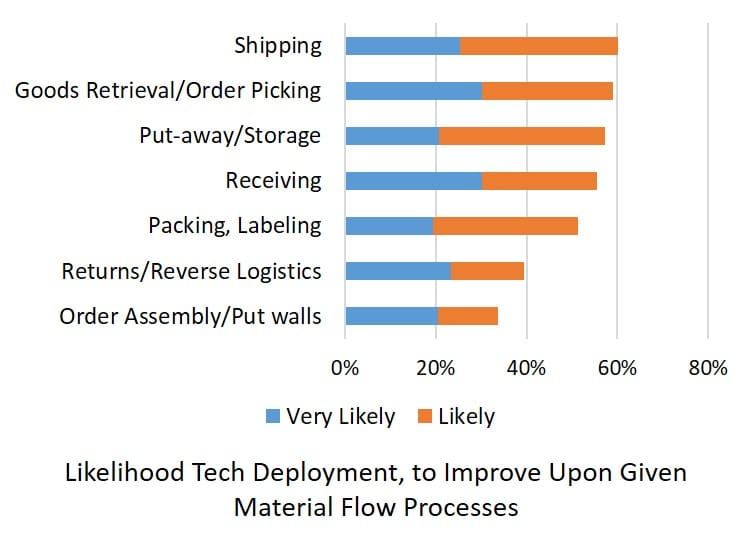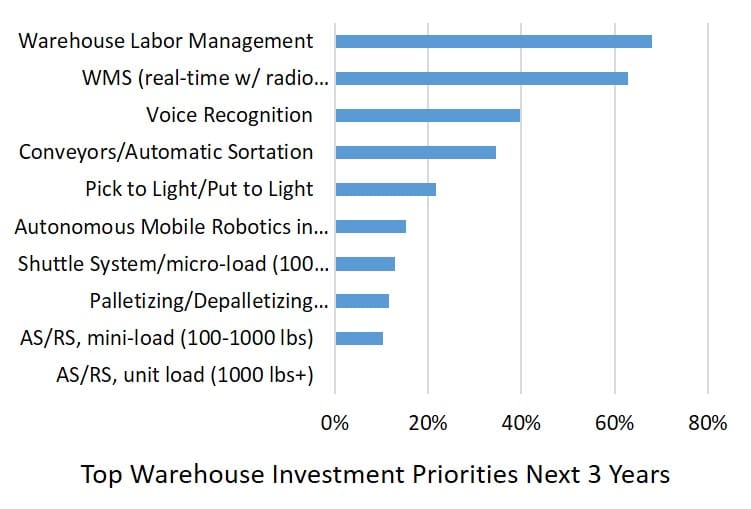 Earlier this month I wrote an article about the changing warehouse order profile. That article presented data and discussed findings from ARC Advisory Group’s warehouse practitioner survey conducted in partnership with DC Velocity earlier this year. The overarching theme of the findings is that the ongoing transformation in the fulfillment environment is quickly shifting order profiles and warehouse operations. Adaptability and responsiveness are becoming more important and direct-to-consumer fulfillment is expected to increase extensively, as is the practice of drop-shipments. At the same time, picking processes are expected to shift toward a greater volume of smaller units. But how are these shifting order profiles and the premium placed on adaptability and responsiveness creating operational challenges at warehouses? And how are these challenges affecting the role of technology and investment priorities?
Earlier this month I wrote an article about the changing warehouse order profile. That article presented data and discussed findings from ARC Advisory Group’s warehouse practitioner survey conducted in partnership with DC Velocity earlier this year. The overarching theme of the findings is that the ongoing transformation in the fulfillment environment is quickly shifting order profiles and warehouse operations. Adaptability and responsiveness are becoming more important and direct-to-consumer fulfillment is expected to increase extensively, as is the practice of drop-shipments. At the same time, picking processes are expected to shift toward a greater volume of smaller units. But how are these shifting order profiles and the premium placed on adaptability and responsiveness creating operational challenges at warehouses? And how are these challenges affecting the role of technology and investment priorities?
We know that e-commerce fulfillment requirements are driving investment in warehouses and in supporting technologies. But we wanted to obtain more detailed information on the specific pain points and requirements that are stimulating these investments. More importantly, we wanted to obtain some idea of practitioners’ investment priorities since many “nice to haves” never reach implementation. So we asked survey respondents about various warehouse material flow and planning processes and the likelihood that they would purchase or implement technology to improve upon these processes.
Key Material Flow Processes
Shipping, goods retrieval/order picking, and put-away are the material flow processes that respondents most noted as likely area to be supported by technology investments (over the next three years). Given the labor requirements of picking processes, its unsurprising that “goods retrieval/order picking” was near the top of the material flow process list. An aftermarket parts retailer specifically noted the assembly of multi-line orders as a primary pain point. This company is considering the use of a put-wall to assemble orders after order items have been picked. Other ARC research supports the view that put-walls are increasingly being used to support e-commerce fulfillment. WMS providers are developing functionality to better support this fulfillment step, and warehouse automation vendors also note that customers are making incremental investments to support the process. Similarly, a respondent from a retail company stated a need for flexible picking solutions for direct-to-consumer fulfillment that can scale-up and still offer high levels of picking accuracy. Clearly that is a goal for all fulfillment operations, but achieving and maintaining the performance at a reasonable fulfillment cost is the challenge.
Key Warehouse Planning Processes
When asked the same question about technology investment for warehouse planning process improvements, parcel shipping, general inventory management, and slotting optimization were the most frequently noted processes as likely recipients of investment support. We expected parcel shipping to be a focus area due to results from other ARC and third-party research showing a substantial increase in parcel shipping resulting from the boom in ecommerce. However, the high percentage of practitioners that plan to invest in technology to support re-slotting and facility layout changes was unexpected, but confirms the view that order profiles are evolving quickly and warehouse managers are diligently searching for sources of efficiency improvements.
Specific Warehouse Technology Investments
We know how order profiles are changing and the specific warehouse processes that practitioners want to enable and improve upon with technology investments. So what are the specific warehouse technologies that practitioners anticipate purchasing or implementing over the next three years?
WMS was the technology most frequently noted as “likely” or “very likely” to be purchased or deployed over the next three years. This is unsurprising since it is a ubiquitous technology and serves as the backbone for warehouse operations. Labor management systems are also a high investment priority for the next three years. This is likely driven by the increased labor costs associated with ecommerce fulfillment. Also, voice recognition can provide some marginal efficiencies on top of the use of RF guns, but is a relatively mature warehouse technology. It is also worth noting that the analysis represents the percentage of respondents, not the percentage of warehouse technology investment. For example, voice recognition requires a minimal investment and a moderate pay back. In contrast, warehouse automation is often a larger investment that is more limited to higher throughput warehouses or more specific profiles. Finally, the low levels of anticipated investment in autonomous mobile robotics indicates that the technology is still at its early stages – in the developmental to early adoption stages.
Finally, businesses live in a world of competing priorities where oftentimes one investment must be chosen at the exclusion of another option. Given that reality, we asked respondents to select their top warehouse technology investment priorities over the next three years, and as a result forcing them to exclude the remaining options. Interestingly, but not surprisingly, warehouse labor management was the most prevalent choice. E-commerce fulfillment is labor intensive and costly, especially when looking at fulfillment costs as a percentage of profit margin on the product sale. WMS was the second most frequently selected investment choice, unsurprisingly given its role as the backbone of warehouse operations. For automation, conveyors/sortation was the most popular investment choice, followed by pick to light/put to light. The responses for conveyors likely reflect the high level of conveyor/sortation use in North America, as compared to Europe, and pick-to-light is often considered a low risk entry into automation that is especially valuable in a direct-to-consumer environment.




















Great study. Keep an eye on autonomous robots like Locus. They are almost ready for prime time even for